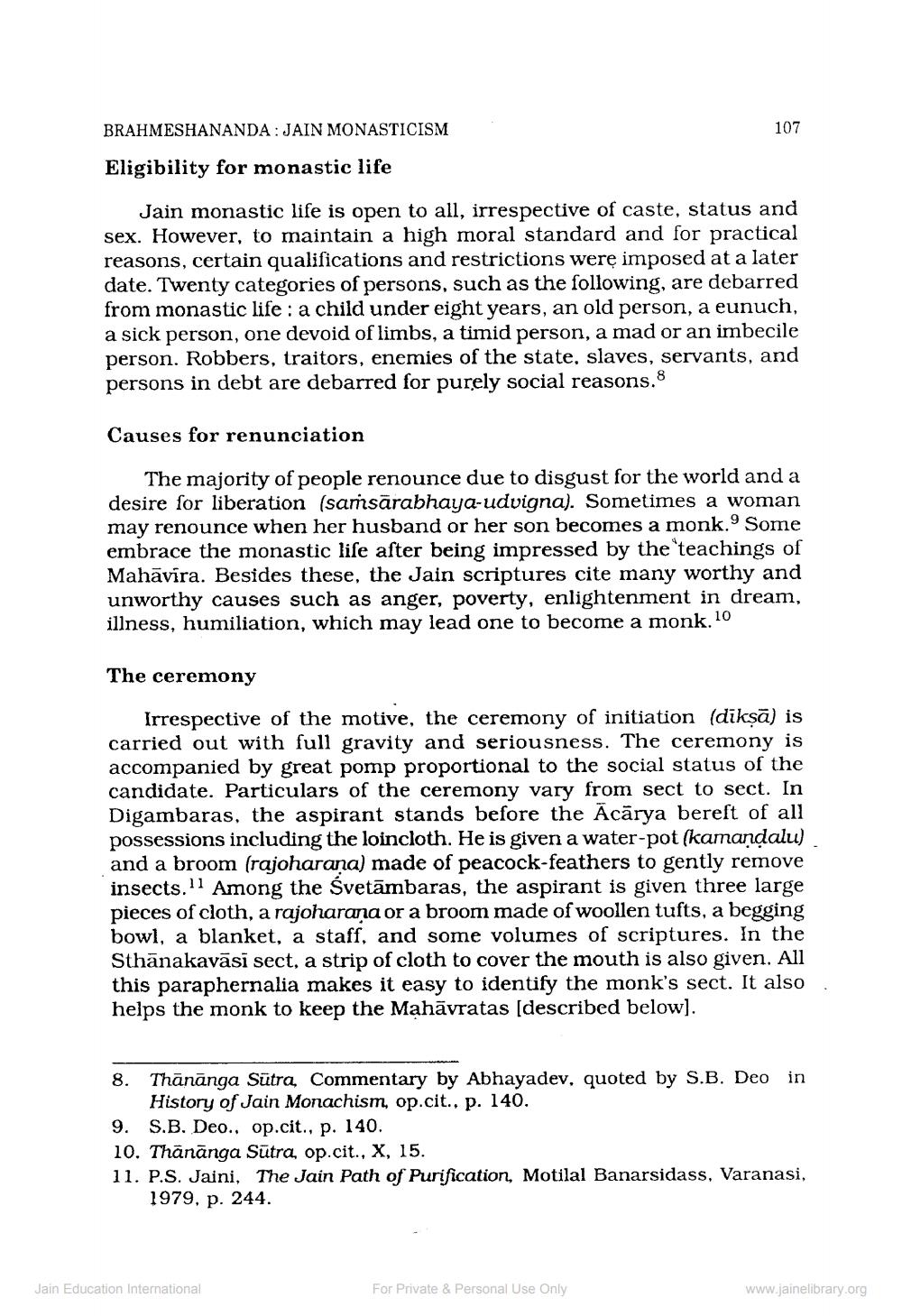________________
BRAHMESHANANDA: JAIN MONASTICISM
107
Eligibility for monastic life
Jain monastic life is open to all, irrespective of caste, status and sex. However, to maintain a high moral standard and for practical reasons, certain qualifications and restrictions were imposed at a later date. Twenty categories of persons, such as the following, are debarred from monastic life: a child under eight years, an old person, a eunuch, a sick person, one devoid of limbs, a timid person, a mad or an imbecile person. Robbers, traitors, enemies of the state, slaves, servants, and persons in debt are debarred for purely social reasons. 8
Causes for renunciation
The majority of people renounce due to disgust for the world and a desire for liberation (samsārabhaya-udvigna). Sometimes a woman may renounce when her husband or her son becomes a monk. Some embrace the monastic life after being impressed by the teachings of Mahāvira. Besides these, the Jain scriptures cite many worthy and unworthy causes such as anger, poverty, enlightenment in dream, illness, humiliation, which may lead one to become a monk. 10
The ceremony
Irrespective of the motive, the ceremony of initiation (dikṣā) is carried out with full gravity and seriousness. The ceremony is accompanied by great pomp proportional to the social status of the candidate. Particulars of the ceremony vary from sect to sect. In Digambaras, the aspirant stands before the Ācārya berest of all possessions including the loincloth. He is given a water-pot (kamandalu) and a broom (rajoharana) made of peacock-feathers to gently remove insects. 11 Among the Svetāmbaras, the aspirant is given three large pieces of cloth, a rajoharana or a broom made of woollen tufts, a begging bowl, a blanket, a staff, and some volumes of scriptures. In the Sthānakavāsi sect, a strip of cloth to cover the mouth is also given. All this paraphernalia makes it easy to identify the monk's sect. It also helps the monk to keep the Mahāvratas (described below).
8. Thānānga Sutra, Commentary by Abhayadev, quoted by S.B. Deo in
History of Jain Monachism, op.cit., p. 140. 9. S.B. Deo., op.cit., p. 140. 10. Thānanga Sutra, op.cit., X, 15. 11. P.S. Jaini, The Jain Path of Purification, Motilal Banarsidass, Varanasi,
1979, p. 244.
Jain Education International
For Private & Personal Use Only
www.jainelibrary.org




